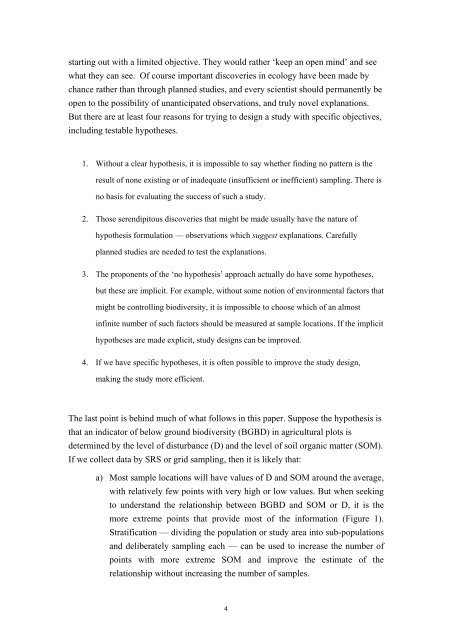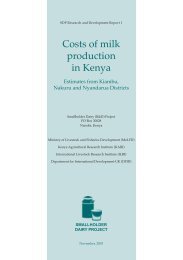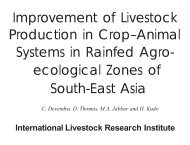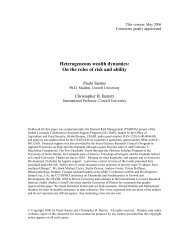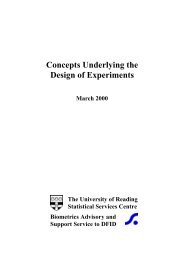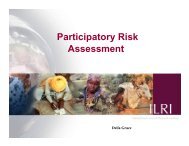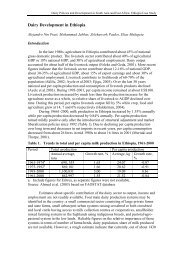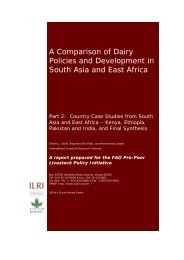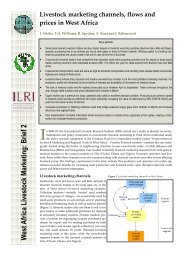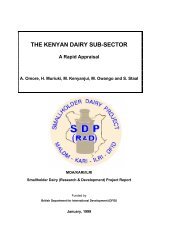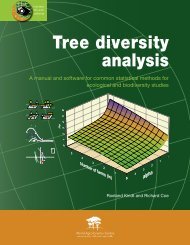Designing ecological and biodiversity sampling strategies
Designing ecological and biodiversity sampling strategies
Designing ecological and biodiversity sampling strategies
Create successful ePaper yourself
Turn your PDF publications into a flip-book with our unique Google optimized e-Paper software.
starting out with a limited objective. They would rather ‘keep an open mind’ <strong>and</strong> seewhat they can see. Of course important discoveries in ecology have been made bychance rather than through planned studies, <strong>and</strong> every scientist should permanently beopen to the possibility of unanticipated observations, <strong>and</strong> truly novel explanations.But there are at least four reasons for trying to design a study with specific objectives,including testable hypotheses.1. Without a clear hypothesis, it is impossible to say whether finding no pattern is theresult of none existing or of inadequate (insufficient or inefficient) <strong>sampling</strong>. There isno basis for evaluating the success of such a study.2. Those serendipitous discoveries that might be made usually have the nature ofhypothesis formulation — observations which suggest explanations. Carefullyplanned studies are needed to test the explanations.3. The proponents of the ‘no hypothesis’ approach actually do have some hypotheses,but these are implicit. For example, without some notion of environmental factors thatmight be controlling <strong>biodiversity</strong>, it is impossible to choose which of an almostinfinite number of such factors should be measured at sample locations. If the implicithypotheses are made explicit, study designs can be improved.4. If we have specific hypotheses, it is often possible to improve the study design,making the study more efficient.The last point is behind much of what follows in this paper. Suppose the hypothesis isthat an indicator of below ground <strong>biodiversity</strong> (BGBD) in agricultural plots isdetermined by the level of disturbance (D) <strong>and</strong> the level of soil organic matter (SOM).If we collect data by SRS or grid <strong>sampling</strong>, then it is likely that:a) Most sample locations will have values of D <strong>and</strong> SOM around the average,with relatively few points with very high or low values. But when seekingto underst<strong>and</strong> the relationship between BGBD <strong>and</strong> SOM or D, it is themore extreme points that provide most of the information (Figure 1).Stratification — dividing the population or study area into sub-populations<strong>and</strong> deliberately <strong>sampling</strong> each — can be used to increase the number ofpoints with more extreme SOM <strong>and</strong> improve the estimate of therelationship without increasing the number of samples.4


